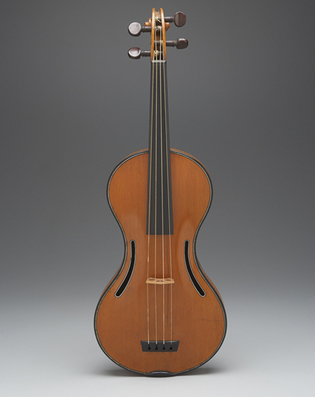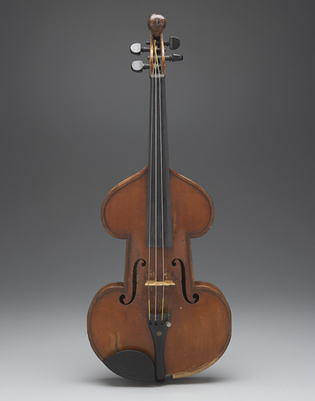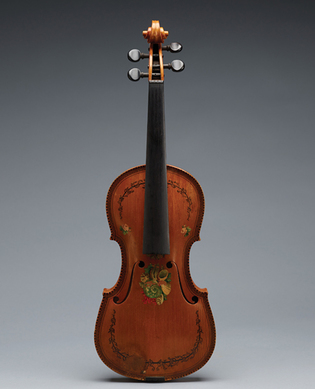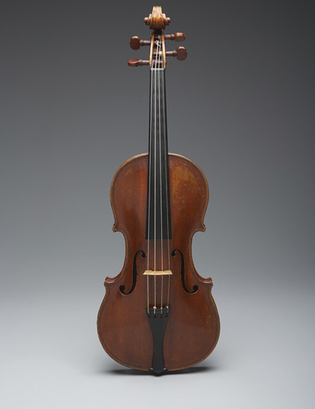 loading
loading
Last LookAncient fiddlesHighlights from Yale's string section. Yale is a museum of wonders. Some of the wonders are enormous. Consider the ice rink (aka the “Whale”) designed by architect Eero Saarinen ’34BFA, or the ups and downs and inside-outs of Paul Rudolph Hall. Many are small: for instance, the Art Gallery’s collection of ancient brooches, or the Elizabethan Club’s First Folio of 1623. __________________________________________________________________  Alex ContrerasView full image1. It looks like a slim guitar, but it’s a genuine violin. Its maker was François Chanot (1788–1825), a Parisian. His father built the same versions of violins that we use now, but François apparently wanted to create something original. His violin has no corners, and the scroll on top curls backwards instead of forwards.  Alex ContrerasView full image2. The School of Music puts the date of this odd-looking instrument from Bern, Germany, at roughly 1870, although the label inside says 1790 (perhaps an effort to make it look more ancient?). It has an unusual and rather clunky shape. And at some point the scroll at the top was removed, to be replaced with the small carved wooden head of a woman. __________________________________________________________________  Christopher GardnerView full image3. This violin is adorned with colorful seashells between the F-holes, inking all around its edges, vines inside those edges, and two little roses. It’s a bit much, but still lovely and elegant. This is a Norwegian folk violin, known in its country as a Hardangerfele. (If you know the correct pronunciation, please send it to __________________________________________________________________  Alex ContrerasView full image4. It’s likely that this instrument may have been the last one made by the great master, Antonio Stradivari. It’s a three-quarters violin, meant for a young player or, conceivably, a woman. The museum has noted two extraordinary finds. One: after all these years, this Strad still has its original varnish. The other: someone—very possibly Stradivari himself—labeled it D’Anni 92: “At the age of 92.” He died in 1737, at 92 or 93.
The comment period has expired.
|
|